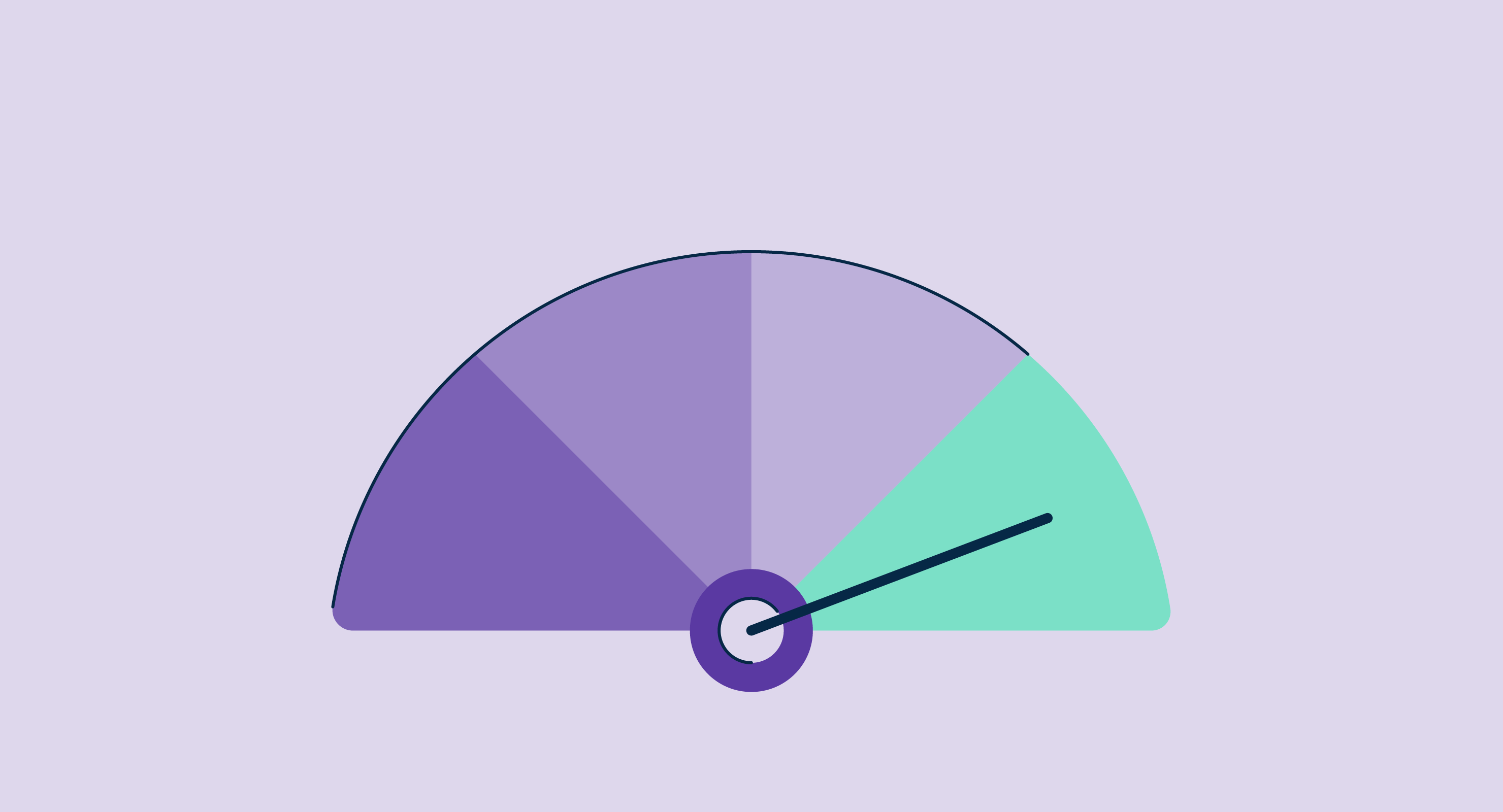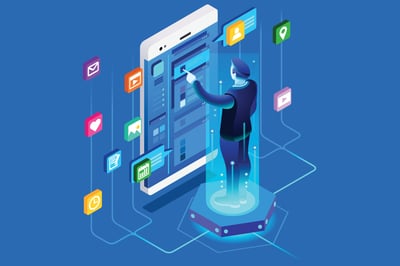

Engagement is everything.
To keep customers coming back for more, businesses must find ways to keep them engaged. This requires anticipating customer needs and being present for them at every touchpoint. A comprehensive omnichannel engagement strategy goes a long way in building strong customer relationships.
Before attempting to engage your customers, you must first understand what customer engagement really means, how best to attract customers, and how to maintain customer loyalty.
So, what does it mean for your business? And how can you make sure you're getting the most out of it? In this post, we'll explore the basics of customer engagement and share some tips for an effective strategy.
Customer engagement is how companies interact with customers, build trust by making them more aware of their brand, and earn loyalty.
It can start with a simple page visit and span all stages of the customer journey, helping you provide a great customer experience and keep customers hooked.
For some, customer engagement is a way of keeping in touch with customers after a purchase. For others, it’s a way of making customers feel special and valued through regular interactions. Whatever your definition of engagement, it’s undeniably an essential part of customer relationship management (CRM).
Customer engagement allows you to connect with your customers and gain their interest in your offerings. You can build and maintain a large customer base by connecting with your customers and actively engaging them. This is the tipping point for creating a positive sentiment around your brand. How does customer engagement fit in the picture?
Customer engagement provides a means of communication between you and your customers. It ensures you always stay in touch with your customers, offer them the best possible services, and learn more about customer needs and concerns. Additionally, engaging customers can help you build better relationships that can lead to future deals.
Not every interaction falls in the same category when connecting with your customers. Some exchanges are purely contextual, while others result from a long-term relationship. To develop a practical engagement strategy, it's best to segment these interactions based on engagement level and intent.
Source: forms.app
Your first interactions with customers usually begin when a potential customer searches for relevant queries on the internet, finds your site and creates an account. Onboarding engagement is this initial touchpoint and can be temporary or permanent.
Engagement is typically low during the onboarding process, and dwell time on your site is short. Customers are mostly trying to understand your product or service and see if it's helpful to them. So it’s only logical to spend this short time efficiently.
By using web analytics services and tracking essential web key performance indicators (KPIs) like page views, time spent, and bounce rates, it's possible to see how well you interact with visitors during onboarding.
Active engagement comes from the regular interactions between you and your customer. This engagement usually occurs once customers are acquired and frequently use your service or product. These customers usually make up the average of your target audience. Engagement is medium, and they spend more time on your website.
You should promote your social media accounts during active engagement and deepen customer relationships. This is the perfect stage to encourage customers to share feedback, follow you on other channels, read newsletters, and download mobile apps.
Social engagement takes place on social media platforms with customers who already know your business and want to learn more about it. For social engagement, you must first strengthen the relationship with your customers and connect them with your brand. Organizing online events and offering incentives can help you attract a social customer base.
Collaborative engagement is the highest level of interaction where customers start creating, sharing, and actively promoting your brand content. This type of interaction usually occurs with loyal customers who are passionate about your products, follow you on most channels, and talk about your business in their daily conversations.
Businesses seek active customer collaboration to attract new customers better. Posting on social media, writing positive reviews, conducting surveys, and creating business content are some ideas for collaborative engagement, showing your impact on your customers.
Customer engagement strategies can be different for different companies. To create one tailored to your needs, learn more about your customers and identify the channels and methods you can use to reach them. Here are seven effective strategies to drive customer engagement.
Personalization means providing customized solutions tailored to customers' specific needs. To personalize the customer experience, start with a few simple steps:
of marketers believe personalization improves customer interactions and conversion rates.
Source: Statista
So how can you get more creative with your personalization strategy?
Many email marketing tools allow you to send custom emails to specific customers. You can combine this with a customizable profile and adaptive recommendation algorithms to offer customers a more personalized experience.
User-generated content (UGC) is any text, video, art, graphic, or sound your customers create for and post about your business. UGC shows you've built a community and appreciate your customers' efforts.
User-generated content also influences the purchasing preferences of potential customers. For example, you'll get more recognition and value if someone uses your product and mentions it on their social media accounts.
To encourage customers to create and post content about you, you can use a simple call-to-action (CTA), add a share button to your website, or encourage them with rewards. Building and maintaining a supportive community helps collect more user-generated content. You can show appreciation and motivate others to create content about you by posting UGC.
Social media is no longer just a secondary place for customers to interact with businesses. It has taken up more real estate and serves as a primary purchase destination for many buyers. Social media interactions help increase customer loyalty because the more customers interact with you on social media, the more likely they are to post about you.
You can use social media to answer customer questions, provide updates on new products, and run promotions. Interactive marketing ideas such as polls, giveaways, and interactive quizzes are popular on social media and the type of content customers highly engage with. Social media is a great way to inform your community, reach them, build better customer relationships, and attract new customers.
By 2022, social media users will have already surpassed 302 million people in the US alone and are expected to reach 327 million in 2027.
Customers love testing their knowledge, voicing their opinions, and getting complementary products. Why not cater to their interests?
Gamification involves using game elements in a non-gaming context, which is turning out to be the next big thing in today's market. Many non-gaming companies, applications, and services use gamification to engage more customers.
Most games are inspired by our real and long-held desires, such as being a hero. As companies realized how ambitious people are in games, they started using game-like elements in their systems. This worked for employees and customers alike.
One of the reasons people like playing games is because they’re set in the desired environment and make them feel rewarded. Some things you can do to gamify your processes and engage more customers:
Incentives include discounts, coupons, or even freebies and are best used to increase customer loyalty. When you offer something of value, you encourage customers to take specific actions such as making a purchase or navigating a product.
For example, you could offer a discount to customers who make a purchase within the next 48 hours or give coupons to those who follow you on social media. You can offer many incentives to keep your customers active and engaged based on your business needs.
Prompt response to customer inquiries and concerns contributes to responsiveness. When customers hear from you promptly, they feel heard. This shows that you care about their experience and are willing to help. Here are some ways you can respond faster and provide better customer service:
Finally, you should make it easy for your customers to take action. This means providing clear instructions, having a simple call-to-action, and adding functional quick-action buttons. A simplified user interface prompts customers to take more steps – the better the customer experience, the better the customer engagement.
All seven of these strategies have an individual impact on your relationship with your customers and become even more powerful when combined. So whether you’re a large organization or a start-up, you can use these strategies and inspire by how leading companies combine them to manage their customers effectively.
Adobe is a reputable software company with many well-known brands under its umbrella. Customers worldwide use Adobe products to create different graphics, videos, and artwork.
One of the interesting things about Adobe is that they have always been active on social media. This helped them build communities eager to learn more about Adobe's products and showcase their work. All Adobe products have social media accounts and regularly post artwork, tips, and tutorials.
Almost all Adobe accounts share user-generated content to promote their community. This content is helpful for learners, keeps people engaged and motivated, and helps artists get the recognition they deserve.
Adobe also organizes many digital events, creates tutorials, and publishes Q&As. It’s one of the most customer-centric companies in the world, with incredibly active communities that don't mind and even like to include their products in their hashtags.
Source: Photoshop
SteelSeries manufactures PC peripherals and accessories such as keyboards, headsets, mouses, and mouse pads. What makes SteelSeries unique in the marketplace is the way it connects and collaborates with customers.
Source: SteelSeries
Spotify is a digital music and audio streaming service with millions of users worldwide. Spotify stands out from other music streaming services because it takes personalization to the next level.
Spotify uses advanced algorithms to understand music preferences and provide customers with personalized playlists weekly. It doesn't stop with only offering weekly playlists. Spotify stores and analyzes user data and presents relevant results at specific intervals. Although it showcases this data to everyone, Spotify makes you feel special by curating playlists for you.
Source: Spotify
Spotify makes sharing what customers hear easier and enables them to post on social media. Spotify allows customers to show their moods or preferences while increasing brand awareness.
Steam is a digital distribution platform that offers games and applications. Steam is one of the best examples of using gamification, personalization, and user-generated content as a game and application store.
Steam offers far more than just digital services. Users can create a highly customizable profile where they can showcase their achievements and badges. Also, each profile has a level. When using applications or playing games, you get random cards and use them to craft badges. You get XPs and level up as you create badges, just like the games you bought on Steam.
Source: Steam
Steam knows what gamers love and uses multiple ways to ensure its users create relevant content. Users who create and publish content in Steam communities earn certain achievements and badges. After creating a certain amount of content, it's even possible to be a curator and give recommendations to other people.
Steam also monitors the applications users use or games they play to show them personalized recommendations. Like Spotify, you get a "Discovery Queue" that suggests games or applications that might interest you. Steam knows its users and adjusts its customer engagement strategy based on their behavior.
Source: Steam
It takes a lot of effort to build a customer engagement strategy and make it work. However, maintaining customer engagement over time can be even more difficult. Of course, this comes with greater rewards, such as brand loyalty, customer retention, and an active community.
Keeping your content fresh and relevant is one of the most critical steps to maintaining customer engagement. Regularly post new and exciting content your customers want to read and engage with. You can also keep them busy by offering exclusive content or deals.
It’s also important to listen to customer feedback and make adjustments to provide a better experience. This can be as simple as shifting a button or re-designing your marketing campaigns.
You can only be successful with customer engagement if you analyze your customers, their behavior, likes, dislikes, and needs, and then develop a comprehensive strategy that meets your business needs.
The above seven strategies will help you get inspired and start building your marketing campaign. Choose the ones that work for your business and combine them to get the best results.
Developing a customer base isn't a day's task. It takes patience and constant effort. But what if you could shorten and simplify the process? Discover three ways to grow your customer base quickly.

Monitor, manage, and improve the customer experience with best-in-class interaction capabilities via customer experience software.
M.Salim Dın is a digital content strategist at forms.app, a form builder application that helps create forms without coding. Salim is a content marketing enthusiast and loves cycling and generating AI art in his spare time.

Monitor, manage, and improve the customer experience with best-in-class interaction capabilities via customer experience software.
Driving customer engagement is essential to business success because engaged customers bring...
 by Evelina Milenova
by Evelina Milenova
How do you determine the success of a mobile app?
 by Chris Ciligot
by Chris Ciligot
Of all 282 Google product obituaries, Inbox's demise was the most hurtful.
 by Arijit Bose
by Arijit Bose
Driving customer engagement is essential to business success because engaged customers bring...
 by Evelina Milenova
by Evelina Milenova
How do you determine the success of a mobile app?
 by Chris Ciligot
by Chris Ciligot
Never miss a post.
Subscribe to keep your fingers on the tech pulse.



